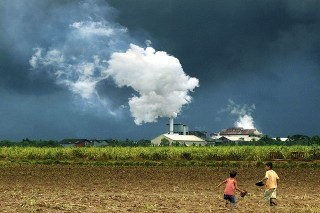Land in the Post-2015 Sustainable Development Goals

Given the plethora of global processes currently ongoing, the UN General Assembly (GA)—and, especially, its 2nd (Economic and Financial) Committee—is feeling overwhelmed. This is the year of the bulk of preparations for Habitat III, the year of preparations for the World Humanitarian Summit (May 2016). Even sooner is the Climate Action Sustainable Innovation Forum (SIF15), a.k.a the Conference of Parties (COP 21), in Paris, 7–8 December 2015.
Most urgent of all is the UN Summit to adopt the Post-2015 Sustainable Development Goals (SDGs). That event, 25–27 September 2015, at UN Headquarters, New York, will form the centerpiece of global development policy through 2030.
Among all of these global processes, access to land and tenure on it remain central as mean of housing and shelter, self-reliant survival and livelihood, environmental coexistence, identity and self-determination. All development, humanitarian and human right sectors put great stock in the outcomes of the SDG process.
Civil society is a broad and highly vested sector in all of these global processes. How does civil society view the issue of land in the SDG process, over-arching all of the others?
Already, six of the draft SDGs directly address land as a resource and a means to the realization of development goals.
Proposed SDG Target 1.4 promises “By 2030 [to] secure equal access for all men and women, particularly those most in need, to basic services, the right to own land and property, productive resources and financial services, including microfinance.” However, civil society organizations have insisted that this target include a time frame and reach additional social sectors, including to “reduce by X % the number of women, men, indigenous peoples and local communities who lack secure equal rights to own land, property, and productive resources.”
Proposed Goal 2 sets out to“End hunger, improve nutrition & promote sustainable agriculture.” The current draft promises to “By 2030, substantially increase small-scale food producers’ productivity and incomes, particularly of women, family farmers and pastoralists through secure access for all to productive resources and inputs, knowledge, financial services and markets.” While civil society organizations have registered agreement with this target, they have proffered the inclusion of “urban agriculturalists, fishers, hunter-gatherers” and the “secure and equitable rights to land and other natural and productive resources” among the means to achieve this end.
Proposed SDG Target 5.a, “Ensure women’s equal right to own and control assets and productive resources,” encompasses land among the most-essential assets and resources. The text currently read: “Ensure women’s equal right to own and control assets and productive resources.” However, civil society actors have proposed to improve the language to set targets and seek to achieve: “By 2030 [to] ensure women realize, on equal basis with men, secure rights to land and property, and other assets and productive resources.”
Proposed SDG Goal 11 seeks to “Make cities and human settlements inclusive, safe and sustainable.” Proposed Target 11.1 aims, by 2030, to “ensure universal access to adequate and affordable housing and basic services for all, eliminate slums and upgrade informal settlements.” In order to ensure harmony among the other SDGs, civil society has proposed a formulation that ensures“secure rights to land and” universal access to adequate, equitable and affordable housing and basic services for all “women and men.”
Proposed SDG Goal 15, the environmental goal, seeks to “Protect and promote sustainable use of terrestrial ecosystems, halt desertification, land degradation & biodiversity loss.” By 2030, the target is to “ensure the implementation of sustainable management of all types of forests and halt deforestation. Civil society organizations prefer to replace all types of forest with the broader reference to “terrestrial ecosystems,” reverse the degradation of forests, and increase reforestation by a [quantifiable percentage]globally, adding “respect for the rights of indigenous peoples and local communities and their participation in decision making.”
Last, but not least, is proposed SDG Goal 16: “Achieve peaceful and inclusive societies, access to justice for all, and effective and capable institutions.” With respect to land, the proposed target 16.4 seeks, by 2030, to:“increase inclusive, participatory and representative decision making at all levels and ensure prior informed consent of indigenous and local communities in decision making and natural resources management, and promote the use of their traditional knowledge and culture.” In this target, global civil society seeks, rather than to “increase,” to “fully implement” participatory and representative decision making, as well as to realize the established principle of “free, prior and informed consent of indigenous peoples.”
Some of these civil society edits to the draft SDGs constitute semantic details. However, each proposal rest on the realization that secure and equitable rights to land and natural resources form a cross-cutting value in the achievement of Goals and Targets in the Post-2015 era.
For more information, see Secure and equitable land rights in the Post–2015 Agenda: A key issue in the future we want.
|